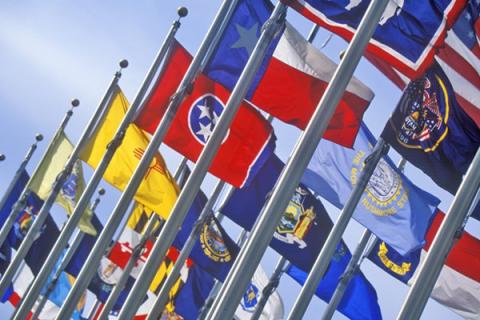At the top of the list is Massachusetts with 53 percent of registered voters declining to state a party preference. Out of 4.3 million registered voters in the Bay State, about 2.3 million remain independent voters. Vastly outnumbering both registered Democrats and Republicans, the two major parties account for 1.5 million and 0.5 million, respectively.
Adding nearly 140,000 new non-affiliated voters since 2008, the number of independents has dramatically grown since 2008. On the other hand, party registration is down for both Democrats and Republicans, losing 7,771 and 6,160 voters, respectively. As more voters leave their parties, it's fair to say Massachusetts is the most independent-minded state in the United States.
Although Alaska has the smallest population of the bunch, comprised by a total of 486,108 registered voters statewide, a majority of Alaskans refuse to register with a party. Non-affiliated and undeclared voters consist of 53 percent of the electorate, followed by Republicans at 27 percent or 133,063 voters. Democrats are lagging behind when it comes to voter registration in the Last Frontier, making up only 14 percent of the electorate.
Following the trend, Rhode Island's 358,045 independents exceed the 290,397 registered Democrats and nearly quintuple the 74,070 registered Republicans.
Democrats have made some strides here over the last several years, picking up 4.8 percent of registered voters since 2006, coming to 40.1 percent of the electorate. Nevertheless, independent voters remain in the lead.
Almost half of Rhode Island voters, 49.5 percent, choose not to affiliate with a party. Meanwhile, Republicans have been unable to keep up, adding only 5,206 voters since 2006, resulting in a 0.1 percent decline in registration.
The state with the fourth largest percentage of independent voters -- out of states with available data -- is New Jersey. Accounting for about 48 percent of registered voters, the 2.6 million independents have grown from 46 percent in 2008, beating out Democrats at 32.5 percent (1.8 million) and Republicans with 19.6 percent (1.07 million).
When compared to 2008, Republicans and Democrats have remained relatively stagnant adding only about 15,000 and 27,000 voters, respectively. Meanwhile, nearly 166,000 voters became independents over the course of Obama's first term.
Connecticut is yet another state where independents outnumber party-affiliated voters. A considerable plurality, 42 percent (872,839), of the state's voters remain unaffiliated with any party, edging out Democrats at about 37 percent (768,176) and doubling Republicans with about 20 percent (430,564).
The long-term trend with independent voters in Connecticut is holding steady given about 42 percent of voters were not affiliated with a major party in 2008.
Nationwide trends have been moving towards fewer and fewer voters registering with a party. Nearly 40 percent of all voters in the United States are decline to state or independent.
